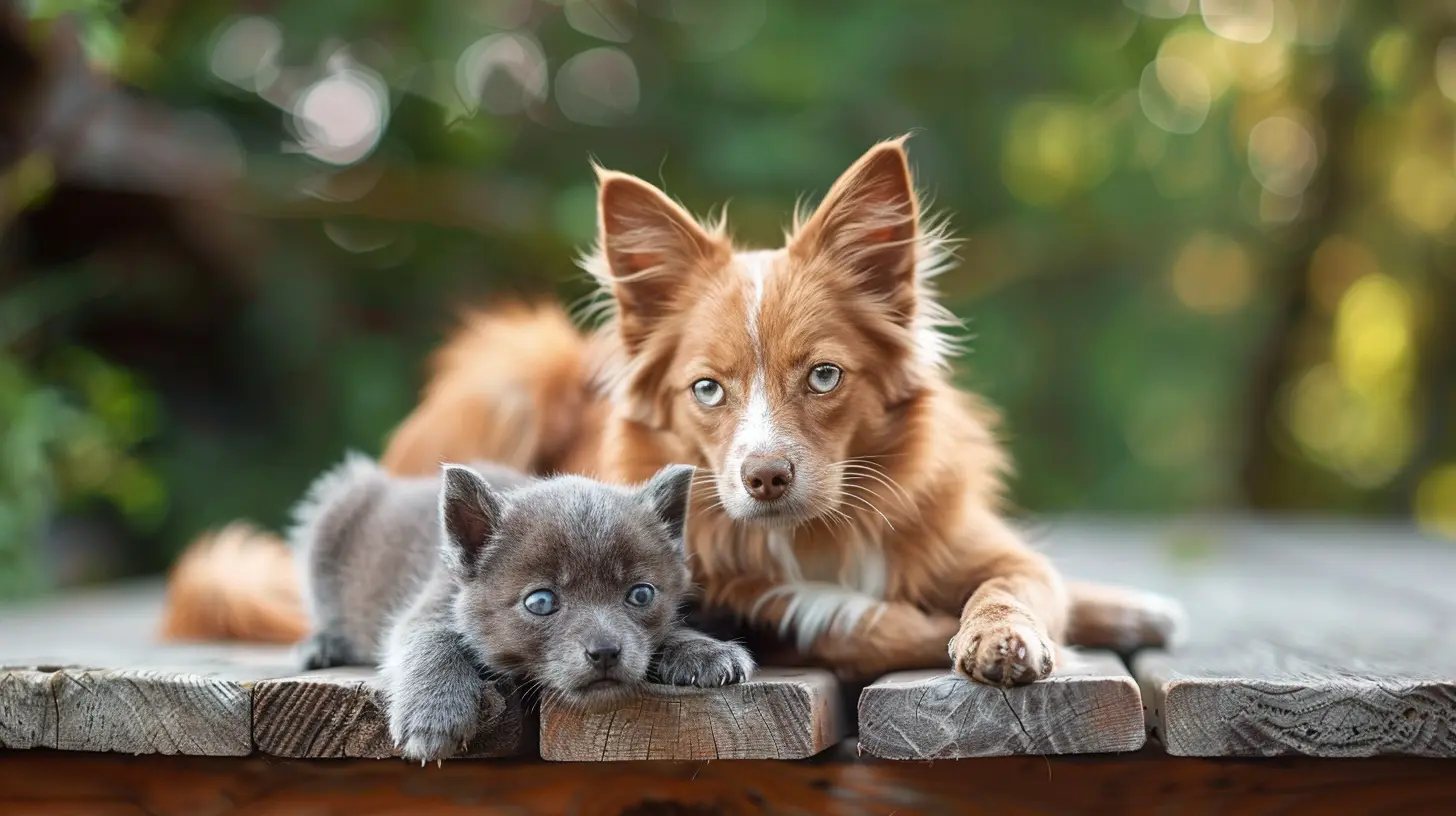Moving with Pets: Making the Transition Easier
17 July 2025
Moving is stressful. But moving with pets? That’s a whole new level of chaos. Your furry (or feathery or scaly) friend has no idea why everything is suddenly in boxes, why their favorite napping spot has disappeared, or why humans are acting all frantic.
But don’t worry—you got this! With some planning, patience, and a few tricks up your sleeve, you can make the transition smoother for both you and your pet. Let’s dive in, shall we? 
Why Moving is Tough for Pets
We humans at least know what’s happening when we pack up and relocate. Pets, on the other hand, operate on routine and familiarity. When their environment changes drastically, it can leave them feeling anxious, confused, or even scared.Think about it: their world smells different, looks different, and sounds different. It’s like waking up in a parallel universe overnight. Wouldn’t that freak you out a little too?
Here’s how you can make the move less nerve-wracking for your beloved pet. 
Pre-Move Preparation: The Calm Before the Storm
1. Keep Their Routine Intact
Pets thrive on routine. As tempting as it may be to pack up their stuff early, try to keep their daily schedule (feeding, walks, playtime) as consistent as possible. If they sense too much disruption, anxiety might creep in.2. Introduce Moving Supplies Gradually
Boxes, tape, and suitcases appearing out of nowhere can make pets feel uneasy. Instead of a sudden invasion of moving supplies, introduce them slowly so your pet can get used to the sight and smell.3. Create a Safe Space
As you start packing, leave one room or a corner untouched where your pet can retreat when they feel overwhelmed. This space should have their bed, toys, and anything else that smells like “home.”4. Visit the Vet
Schedule a pre-move vet visit to ensure your pet is in good health. If you're moving long-distance, ask about travel anxiety solutions and update microchip information or tags with your new address.5. Get Them Used to a Crate or Carrier
If your pet isn't familiar with a crate or carrier and will need to travel in one, start the training early. Let them explore it with the door open, place treats inside, and make it a positive space.
Moving Day: The Battle Begins
1. Keep Pets in a Safe Zone
Moving day is chaotic. Doors will be open, people will be in and out, and loud noises will be unavoidable. The last thing you want is Fido making a great escape.Options:
- Keep your pet in a quiet, closed-off room with food, water, and familiar items.
- Ask a friend or family member to pet-sit for the day.
- Consider boarding them at a trusted kennel or daycare until the move is completed.
2. Stick to Feeding and Walking Schedules
In the midst of moving madness, don’t forget meal and potty breaks. Sticking to their usual schedule helps reduce stress.3. Traveling with Your Pet
If you're driving, keep your pet in a well-ventilated carrier or car harness. Make pit stops for bathroom breaks and water.For long-distance moves, research pet-friendly hotels ahead of time.
Flying? Check airline regulations and, if possible, book a direct flight to minimize stress. 
Settling into the New Home: Operation “Adjust & Conquer”
1. Unpack Their Stuff First
Before you even think about setting up your own bed, arrange your pet’s essential items—bed, food, water, toys. Familiar scents will make the new space feel a little less strange.2. Keep the Layout Similar
If your dog’s food and water bowls were in the kitchen at your old home, try placing them in a similar spot in the new place. Keeping things familiar helps ease the transition.3. Give Them a Tour
Walk your pet around the new home so they can explore at their own pace. For dogs, do this on a leash initially so they don’t get overwhelmed.4. Reintroduce Their Routine ASAP
Moving doesn’t mean a vacation from their regular routine. Get back to normal meal times, walks, and playtime as soon as possible so they can settle in faster.5. Address Behavioral Changes
It’s normal for pets to act a little “off” in a new environment. Some may become clingy, while others might hide for a few days. Be patient and give them time.If unusual behaviors persist for weeks (e.g., refusing food, excessive barking, or destructive behavior), consult a vet or pet behaviorist.
Special Considerations for Different Pets
Dogs: The Loyal Movers
- Walk your dog around the new neighborhood to help them get familiar with sights and smells.- Check for any unsafe areas or gaps in fencing if you have a yard.
- Be mindful of new noises—some dogs may be more sensitive to unfamiliar sounds.
Cats: The Escape Artists
- Keep your cat indoors for at least a few weeks before allowing outdoor access (if they’re an outdoor cat).- Provide plenty of hiding spots to help them feel secure.
- Use pheromone diffusers to help reduce stress.
Small Pets (Rabbits, Guinea Pigs, etc.)
- Keep their enclosure setup as similar as possible.- Minimize handling during the move to reduce stress.
- Ensure the room is temperature-controlled, as small pets are sensitive to temperature changes.
Fish: The Delicate Ones
- If moving a short distance, transport them in sealed bags filled with tank water.- For long-distance moves, consider temporarily rehoming them with a trusted friend or using a specialized pet transport service.
- Set up their tank ASAP in the new home and allow the water to stabilize before reintroducing them.
Helping Pets Feel at Home Faster
1. Shower Them with Attention
Amid the chaos, don’t forget to spend quality time with your pet. Play with them, cuddle, and give them extra love.2. Monitor Their Health
Stress can sometimes lead to digestive issues or changes in appetite. Keep a close eye on their eating and bathroom habits.3. Stage a Mini Housewarming Party
Once your pet is comfortable, invite over a few trusted friends or family members (especially if they’re people your pet knows and loves). This helps reinforce positive associations with the new place.4. Make New Memories
Break in the new home with fun activities—maybe a new toy, a treat puzzle, or a walk in a new park. Positive experiences will help them feel like this is home.Final Thoughts
Moving with pets doesn’t have to be a nightmare. With some thoughtful planning and plenty of patience, your furry companion will adjust in no time. Keep routines consistent, provide comfort, and ease them into the transition at their own pace.After all, home isn’t just a place—it’s wherever you and your pet feel safe, happy, and loved.
all images in this post were generated using AI tools
Category:
Moving TipsAuthor:

Elsa McLaurin
Discussion
rate this article
1 comments
Yazmin McAdams
Embrace the journey of moving with your furry friends! Every new home holds endless possibilities for exploration and bonding. With a little planning and love, you can turn this transition into an exciting adventure. Remember, it’s not just a house; it’s a new chapter for all of you!
August 3, 2025 at 11:25 AM

Elsa McLaurin
Absolutely! Embracing the journey with your pets transforms moving into a shared adventure filled with new experiences and cherished memories. Happy relocating!


